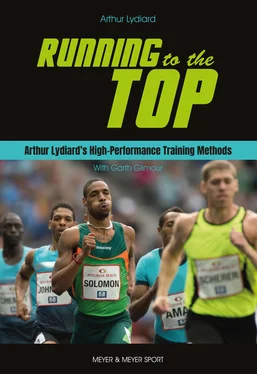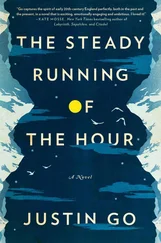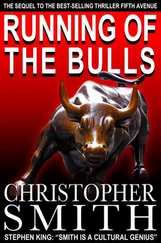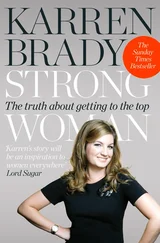It’s an anthropomorphic fact, of course, that the Africans have the advantage over Caucasians of larger gluteal muscles. They can do things to get more power that white people can’t. They can actually lean forward and still get their knees up; the Caucasian has to stay much more upright.
But the American publication, Running Research News cast new light on Kenyan supremacy by reporting the results of a study by Swedish exercise physiologist Bengt Saltin, of the famed Karolinska Institute in Stockholm. He compared seven elite Swedish runners with students from Kenya’s St. Parick’s high school, which, with a roll of about 500 students, has produced six world cross-country champions, four sub-2.10 marathoners and more than a dozen Olympians.
Saltin, reported RRN’s Owen Anderson, PhD, reckoned that thousands of Kenyan runners were just as good as the top seven Swedes but discovered that St. Patrick’s athletes followed incredibly simple training plans, which included a considerable mileage run as fast as possible on six days of the week. Running to and from school added some 10- to 30-km slower running to the plan.
Saltin found the Kenyans had a small advantage over the Swedes in total anaerobic capacity (about three per cent). The Swedes’ VO2 max ranged from 76 to 81 ml/kg/m; the Kenyans’ from 79 to 87. Each group had equal slow-twitch to fast-twitch fibre ratios but then Saltin found a significant difference in what lay inside and around the Kenyans’ muscles.
They tended to have more mitochondria per muscle cell and more capillaries draped round their fibres. The Swedish runners had four to five capillaries per muscle cell in their quadriceps but the Kenyans had seven to eight, quite similar, Saltin found, to the world’s best cross-country skiers, giving them a greater capacity to use oxygen and a greater resistance to fatigue.
Inside their muscle cells, the Kenyans had a higher concentration of the enzymes which break down fat and greater quantities of citrate synthase, a critical enzyme needed to provide muscles with energy aerobically. Reverting to Biwott for a moment, Sports Illustrated magazine ran a big article on him when he won his Olympic medal, showing him in his home village, which was largely mud and straw huts. Here, the magazine said, was an athlete who had never had a coach, wasn’t trained properly and didn’t even have the right food but won an Olympic gold medal.
If we look at the situation sensibly, Biwott didn’t need a coach. He was better without one. He laid the basis for his success with all that running between home and school with no more pressure on him than the weight of his schoolbag. He trotted along at his own pace, playing as he went, as kids will do when left to their own devices – and there was the best training he could get. None of the American way: The guy with ‘Coach’ on his back, a clipboard and a stopwatch in his hands, shoving kids through repetitions until they are falling down with fatigue, blacking out and vomiting because the oxygen debts they are incurring are so great their central nervous systems are being attacked. Many of them, who got their college education only because they won sporting scholarships, have told me since that they dropped running as soon as they graduated although they slowly drifted back to jogging and social running with friends and family. They had all had the competitive edge drilled out of them.
There have been many examples in New Zealand of top high school boys who, on natural ability, could beat everyone in the distance races, the road races and the cross-country events, but then, at twenty or so, were no longer champions. With maturity, people lose the high oxygen uptake which is natural in children, and these top runners hadn‘t trained to develop or maintain that level as they grew older. But the boys they had been beating, who didn’t have the natural talent but had worked harder and more sensibly at developing their running, and maintained a high oxygen uptake capability as a consequence, went on to be the champions.
Peter Snell was only the third best 800 metres runner at Mt Albert Grammar School in Auckland. The best broke Murray Halberg’s national junior mile record, the second best was the national 800 metre junior champion but Snell went on to beat the world. The others dropped out and disappeared.
And, as far as food was concerned, Biwott never went to a supermarket and loaded up with processed grains from which the producers had taken out about 18 minerals and vitamins and put only three back. Sports Illustrated pictured him surrounded by beautiful fields of grain. When they cropped that grain, they didn’t process it. They broke it up and beat it up and cooked everything. And it’s another fact that Africa is possibly one of the last places on earth where most of the soil is still properly balanced.
So Biwott had the best training and the best diet. That’s why he won a gold medal, contrary to what Sports Illustrated was trying to establish.
So, if we are going to train children, we‘ve got to encourage them to see how far they can run, not how fast. We’ve got to get them trotting along and enjoying it, using the parks and roads, enjoying running as a pleasant exercise within their limitations. Setting them out to beat the other kids is contrary to the development of future champions.
Children are better equipped than adults to run distances. They love to run, to jump, to throw things … it’s all a natural release of energy. If you went into a street and said to all the kids there, “Come on, let’s all go for a jog“, they’d probably all follow along. In most cases, kids who seem idle and lazy only need someone to motivate them. If they have nothing to do, they’ll probably get into trouble; if someone can give them a goal like going running or a game of football or cricket, they won’t.
Years ago, the kids at the Owairaka Club in Auckland would turn up on Saturday afternoons with the harriers, go out and run two or three miles across country, come back to the club but, instead of lying around, they’d immediately start playing chasing games around the shed. They wouldn’t be tired from the run; when they did get tired or, more likely, too hot, then they eased down or stopped until they were ready to go again. The endurance of children is a huge natural resource.
Girls can run just as easily as boys; when they’re young, they can often run better. But as they develop and, as many of them do, get wider hips, they can’t run as well because their physical changes prevent them from bringing their legs through as easily or as straight. They start to get knock-kneed and throw themselves around a bit. The tall, willowy build, what we might call the Swedish type, is physically best equipped for running. This is no hard and fast rule – I’ve seen girls with markedly wide hips develop into excellent runners – but it’s common.
Another fact, of course, is that women, again as a general rule, have more subcutaneous fat in the muscles than men and, when it comes to real endurance, they seem to have an advantage. It’s a natural storehouse of energy which they can use before running into deficit.
In 1971 in Copenhagen, two doctors specialising in cardiology put on a 100-km run which drew about a hundred starters. It was the first ultra I had seen so I was keenly interested in the outcome. And it was most interesting to observe that, at the end of that race, most of the men were lying down and relaxing and the women were still standing up talking.
They still don’t run as fast as men, of course, because they don’t have the same muscle power – probably about thirty to forty per cent less – although there are the inevitable exceptions of weak men and strong women. I would say, too, that their oxygen uptake level isn’t as high, so cardiorespiratory efficiency isn’t as great although their cardiovascular efficiency could be. I could be wrong in this, but the evidence seems fairly convincing.
Читать дальше












